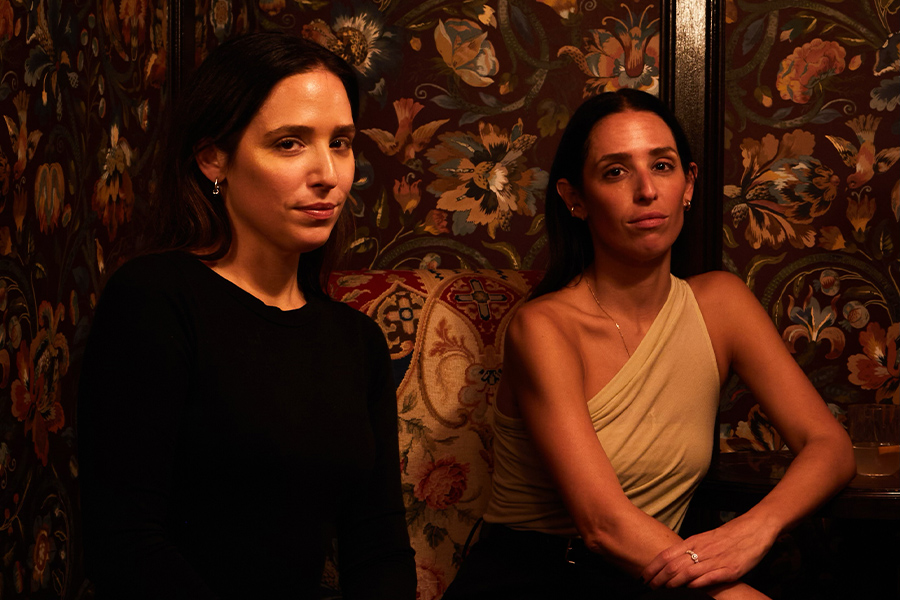For the past three decades, Clodagh Design has been at the forefront of the wellness movement. As a firm signature, this focus on wellbeing has led to notable projects with longtime collaborator Six Senses, and recently with Miraval on its Austin property, which boasts a design that celebrates mindfulness above all else. Nancie Min, design director at the New York firm, is largely responsible for making this biophilic approach integral to the firm’s ethos, finding the power in the mind, body, and soul connection.
What does biophilia mean to you as a designer?
Clodagh Design’s core value since inception in 1989 has been promoting wellness through design. Biophilia is one of the key modalities we embrace and practice to bring wellness and joy through our work. I find connection to nature to be not only profoundly grounding and healing, but it’s also a powerful equalizer between genders, cultures, religions, and generations. Everyone finds joy and comfort from it. Everyone benefits from it and appreciates it. No one opposes it.
Are more of your clients actively seeking to connect with nature?
We used to be the trailblazers, instigators, and guides of this idea for years for our clients, and now we are finding that more and more of them have familiarity with the term. One of our most recent RFPs had the word biophilia as part of the project description. There is certainly more awareness of its benefits, and owners and operators are seeing the rewards and possibilities.
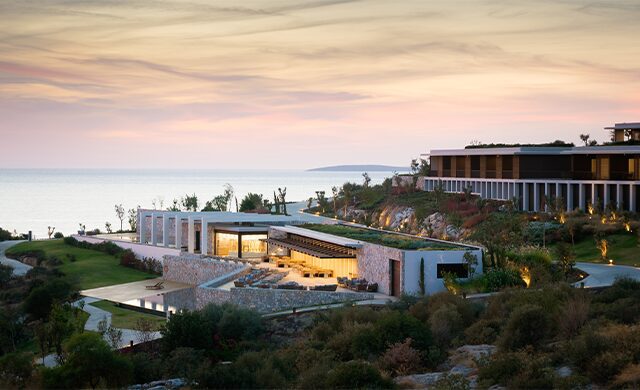
Six Senses Kaplankaya is surrounded by stone walls and vegetation
How does Clodagh Design imbue projects with biophilia?
Six Senses Douro Valley is located amid beautiful valleys surrounding Portugal’s Douro River, scented with the amazing fragrances of the vineyards. To be able to take in the essence of the valley upon arrival, we created a large opening in the reception with a balcony to imprint an extraordinary first impression. We transformed the tennis court into an organic garden where herbs and vegetables are harvested for the restaurants on the property. Almost every space has a gorgeous view of the valley and the river, but where we lack this, we have intimate terraces or green walls to continue the biophilia experience.
At Six Senses Kaplankaya in Turkey, we found two incredible ancient olive trees from the area and planted them at the arrival courtyard to greet the guests. A green wall integrated with a water feature activates the courtyard in the most tranquil way. Another green wall was created to keep all the service buggies out of view. Local, natural materials were incorporated everywhere. Creating moments within the landscape was important to enriching the outdoor experience and encouraging the guests to be outside more.
How will biophilia continue to impact the hospitality industry?
It is projected that two-thirds of the population will live in urban areas by 2050. Conscious integration of biophilia will be critical in making the everyday liveable. The hospitality sector is a leading force in design, and it will certainly produce extraordinary examples of biophilic design to inspire all.
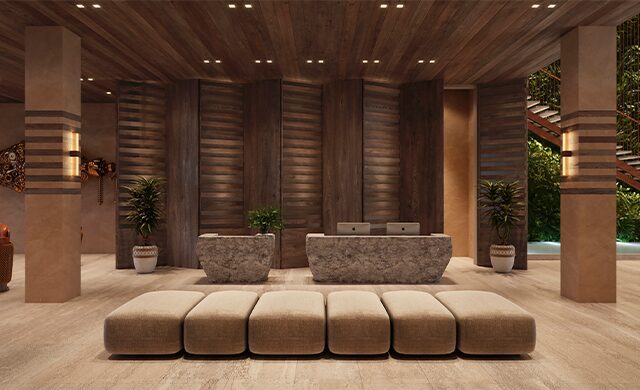
A rendering of the wood-filled reception area at the upcoming Grand Hyatt Grand Cayman
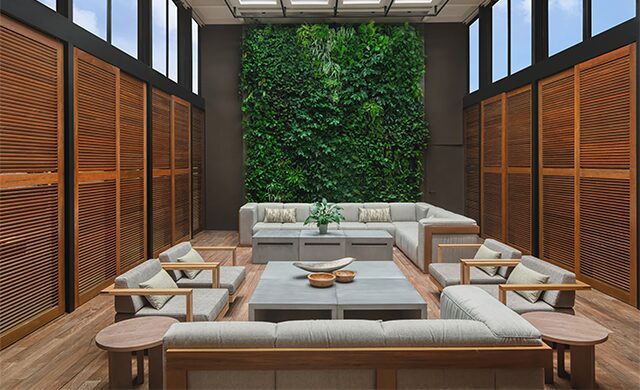
A green wall backs a lounge area at Six Senses Douro Valley
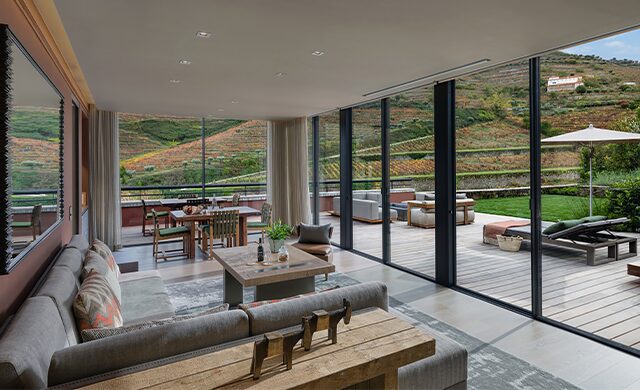
The master suite’s living room at Six Senses Douro Valley frames sweeping views of the landscape
Photos by John Athimaritis and courtesy of Six Senses Hotels Resorts Spas
This article originally appeared in HD’s March/April 2020 issue.


